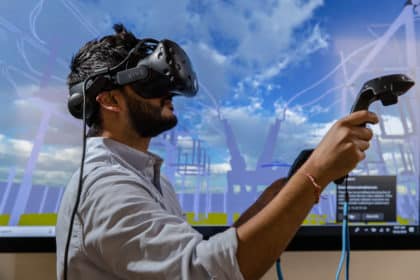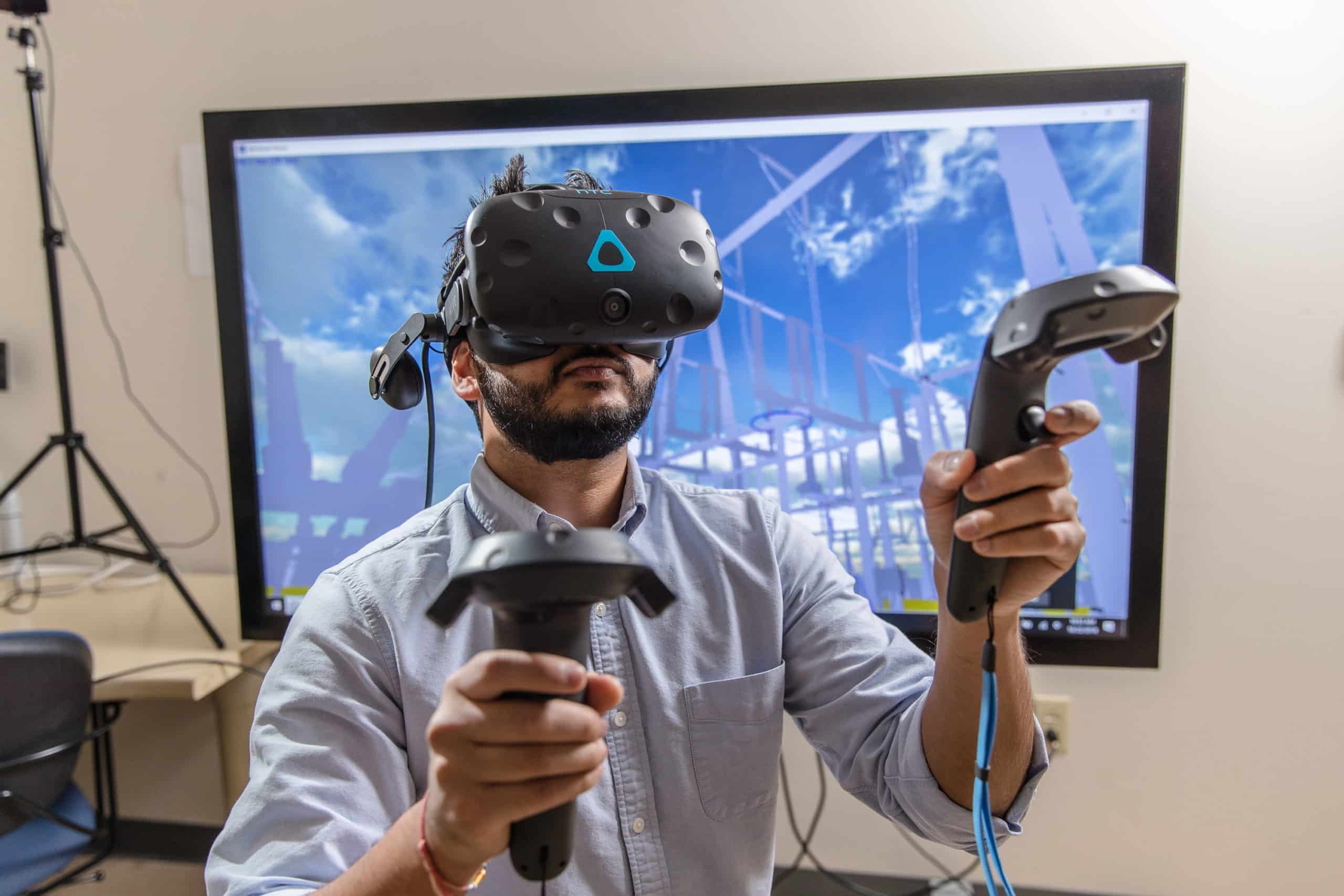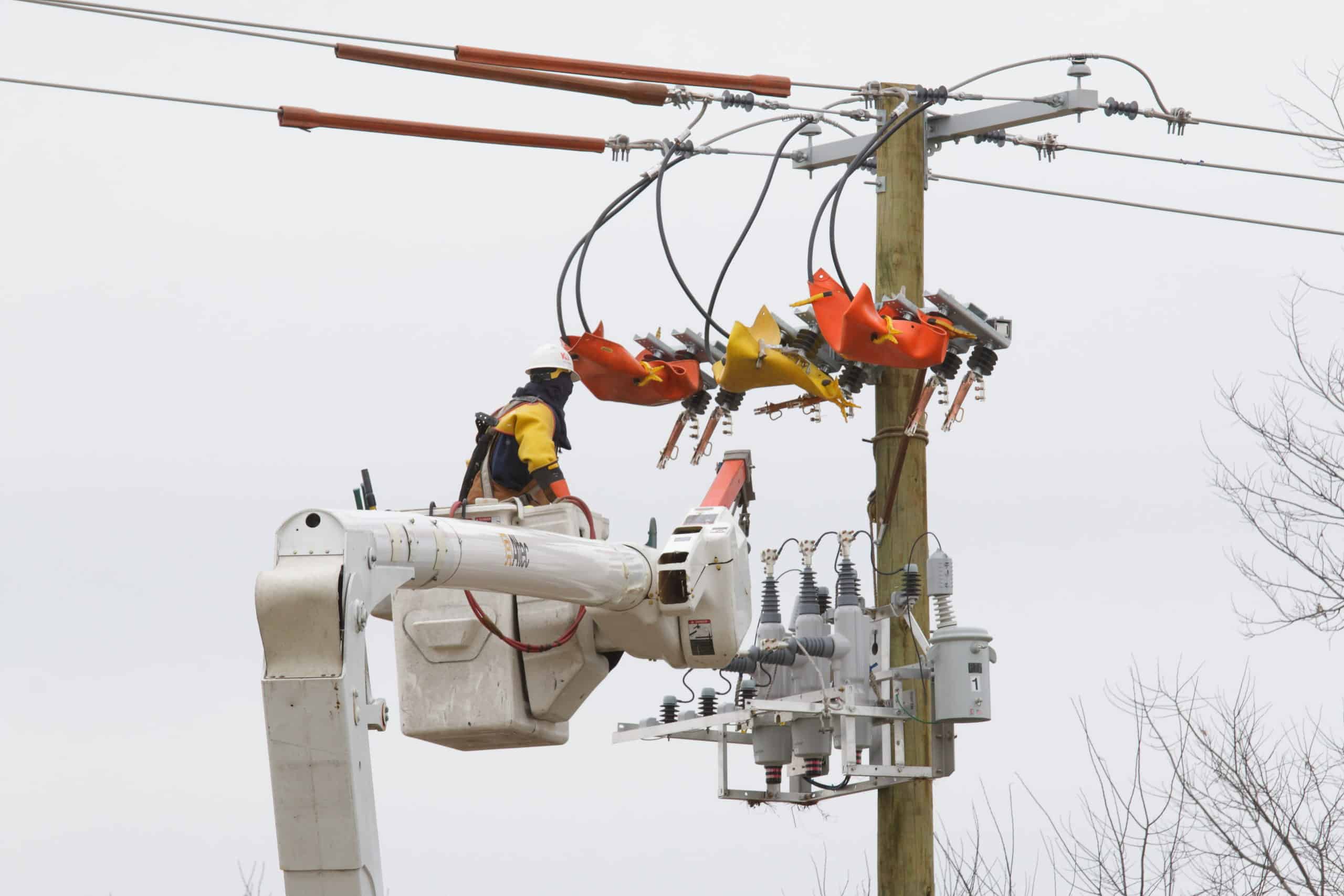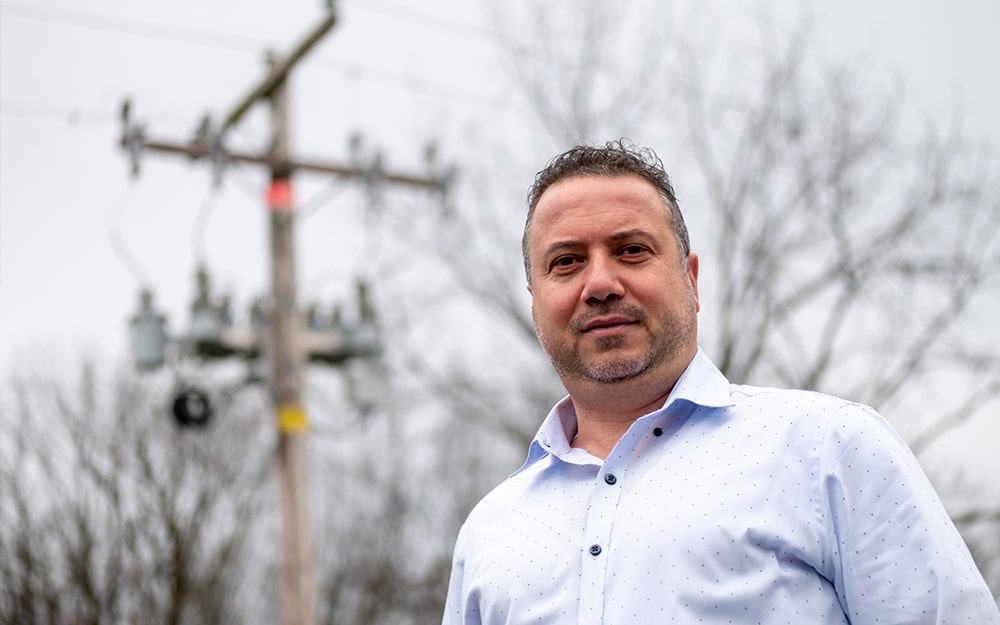When Devraj Banerjee dons virtual reality headgear in a room at PPL’s headquarters in downtown Allentown, it covers his eyes, but his view of the job at hand is expanded like never before.
Looking at a substation design, he can do things like simulate a construction sequence, something he would not be able to do in an on-site field visit. He can look around that virtual environment and accurately assess if new equipment will fit and if there is enough space to operate it safely.
Banerjee, a support engineer for PPL Electric Utilities, believes digital technology is one of the most important ways to meet the challenges of the future. Technology like virtual reality and augmented reality will someday be commonplace in the electric utility industry. It’s already being used in other industries, such as vehicle design, manufacturing and healthcare.
Virtual reality (VR) is an artificial, computer-generated world that features sounds and images controlled by the person experiencing it. Augmented reality (AR) uses technology to overlay computer-generated images on something being viewed through a device like specialized glasses or a smart phone.
Right now, PPL Electric Utilities is in the early stages of piloting VR and AR, but the promise is evident. Danny Jarrah, manager, Substation Engineering and Engineering Services, said using both technologies has tremendous potential in determining constructability and maintainability, and in producing safe, quality designs.
“We see a variety of beneficial uses,” Jarrah said. “Among other things, it can be used for training, as well as operations and maintenance. We may even use it at transmission project open houses to give the public a virtual view of what a new substation or power line might look like.”
Nothing will ever totally replace onsite, boots-on-the-ground work on the grid, but technology like VR and AR have the ability to make work safer and more efficient.
The Technical Development & Improvement Group plans to incorporate the technology into employee learning solutions and Work Methods materials. There is an AR/VR Station located on the first floor of the PPL Conference Center at Walbert to offer a glimpse into how the technologies can transform the way people learn and safely perform job tasks.

Patricia Scaramuzzo, manager, Technical Training and Development for PPL Electric Utilities, said using AR and VR is about taking important next steps in using technology to help employees work smarter, safer and more efficiently.
“Imagine being able to look through your AR lens and be guided step by step as you service a piece of equipment,” she said. “The utility of the future is going to be a decidedly digital utility. It’s an exciting, challenging time.”
Just as importantly, there are benefits to being able to work on equipment without the real-world consequences of a mistake.
Jarrah said PPL Electric Utilities will continue to build in-house expertise in using the technologies. Using AR or VR technology won’t happen in a vacuum, however. Other things, like three-dimensional modeling and GPS technology also will play complimentary roles.
“Someday, in a storm restoration situation, I can envision someone wearing AR glasses to be able to access geographical location data in the field, pull up recorded drawings and standards, and develop a list of the necessary materials to make repairs,” Jarrah said. “This will speed repairs and reduce outage durations.”
The utility of the future may be closer than we think.



